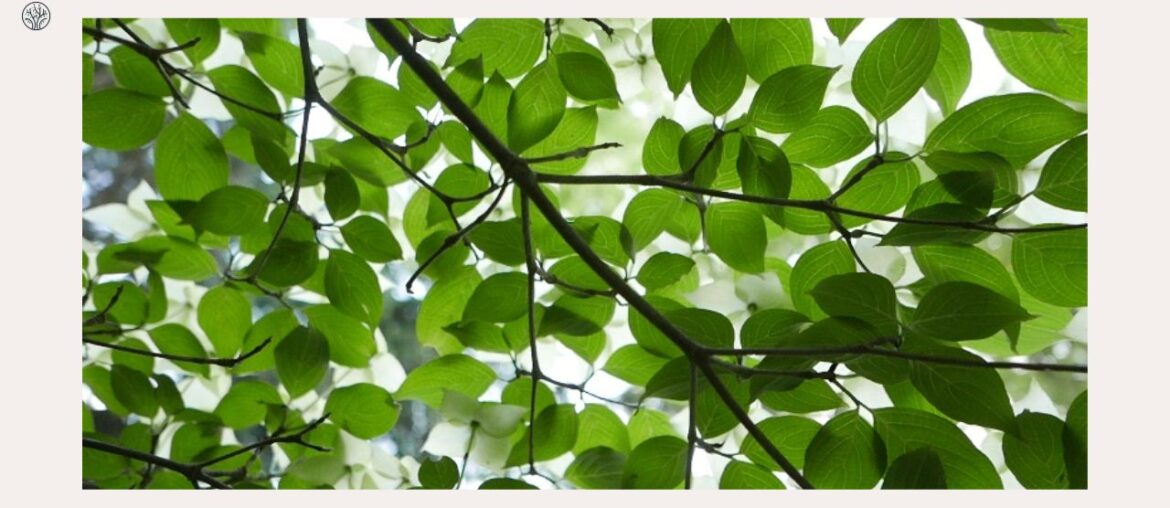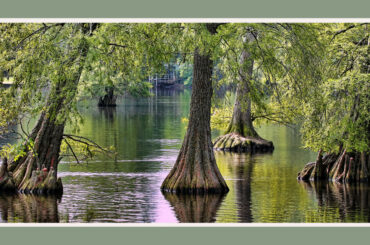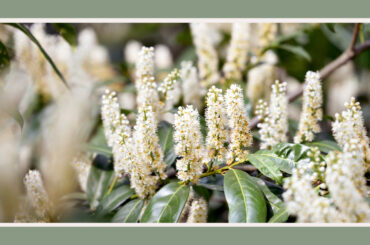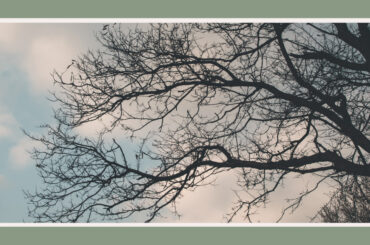Dogwood trees are a charming and diverse group of flowering plants that grace landscapes across North America and beyond. This article will discuss the different leaves of dogwood trees, along with their other notable features.
Whether you’re a pro botanist or simply someone who values the beauty of nature, you will get valuable insights from this article.
How To Identify Dogwood Tree Leaves?
Dogwood trees, which belong to the genus Cornus, are native to North America, Asia, and parts of Europe. They have become popular choices in landscaping and gardening for their ornamental value.
The dogwood tree is well-known for its delicate, unique leaves and elegant blossoms. Recognizing dogwood trees by their leaves is an easy task once you’re familiar with their features throughout the seasons.
Spring Appearance
As the frosty winter ends and the warm breath of spring comes, the dogwood tree starts growing bright green leaves. These fresh leaves are smooth to the touch and have a shiny surface.
They’re usually 3-6 inches long and have a typical ovate shape. Their edges can be either smooth or slightly wavy. The vibrant spring green of these leaves provides a stunning backdrop to the dogwood’s blossoms.
Summer Appearance
During the hot summer, the leaves mature and deepen in color, giving a rich, dark green hue. This dark color helps protect the leaf from the harsh sun by reflecting more sunlight. These mature leaves are thicker, maintaining moisture even in the scorching heat. They provide excellent shade and contribute to the tree’s dense canopy.
Fall Appearance
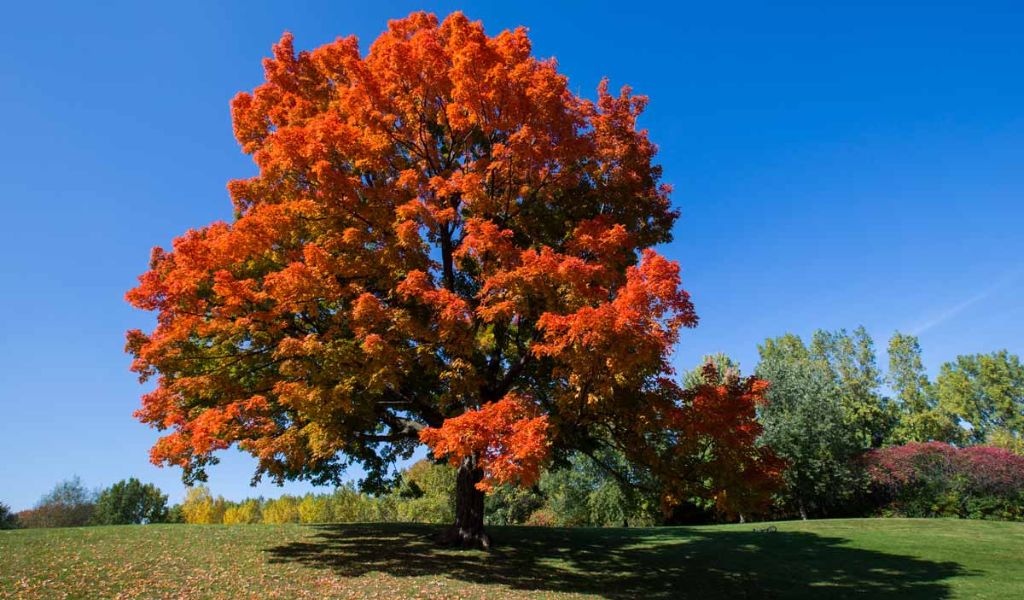
As the cooler winds of autumn blow, the dogwood leaves begin their spectacular change. They vary from green to various colors, including deep red, maroon, and even purplish hues. This shift turns the dogwood tree into a fiery spectacle, making it a focal point in many autumn landscapes.
But that’s not all. Apart from the leaves of dogwood trees, there are several other features you can use to identify the tree:
- Bark: One of the unique traits of the dogwood tree is its bark. It has a rugged texture with patterns that resemble the scales of a reptile. This distinct appearance often earns it the description of “alligator skin.” As the tree matures, this pattern becomes even more pronounced, making older dogwoods easily identifiable.
- Fruits: Come late summer, the dogwood tree produces groups of bright red fruits. These fruits, called drupes, are a favorite among birds like robins and cardinals. Though unsuitable for human consumption, they add to the tree’s ornamental value.
- Flowers: The dogwood’s flowers are its crowning glory. Blooming in spring, these are not actual flowers but bracts – modified leaves. They come in shades of white, pink, or red, depending on the variety. These bracts surround the actual flower, which is a small, greenish-yellow cluster.
For your information, dogwood trees are known as “bleeders” because they can release a lot of sap when wounded. This tree sap is not flammable, but it can be sticky and hard to remove.
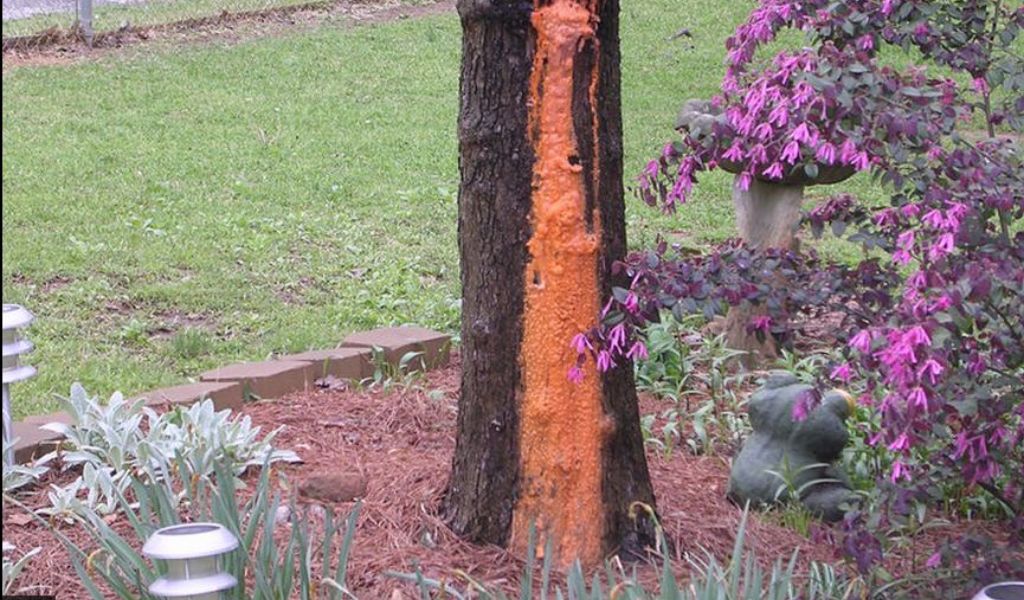
Also, dogwood tree sap is not edible, but some parts of the tree are. For example, the fruits of some dogwood species, such as the kousa dogwood and the cornelian cherry dogwood, are edible. The flowers of some species, such as the flowering dogwood and the pagoda dogwood, are also edible and can make tea or wine.
However, some parts of the dogwood tree are poisonous, such as the seeds and the bark. Therefore, it is vital to identify the type of dogwood tree and its parts before consuming them.
Types Of Dogwood Trees And Their Leaves
There are at least 17 types of dogwood trees native to or cultivated in North America. Each of them has different characteristics and uses. Here are some of the most common dogwood tree type and their leaves:
Flowering Dogwood (Cornus Florida)
Flowering dogwood, scientifically known as Cornus florida, is one of the most well-known and beloved dogwood tree species. It is a small to medium-sized deciduous tree that typically reaches heights of 15 to 30 feet.
The leaves of these trees are simple and opposite, meaning they grow in pairs along the branches. They are typically oval to egg-shaped and have smooth edges. The leaves are dark green during the growing season and turn vibrant shades of red, orange, and purple in the fall. Their fall foliage is a striking feature, adding to the tree’s overall beauty.
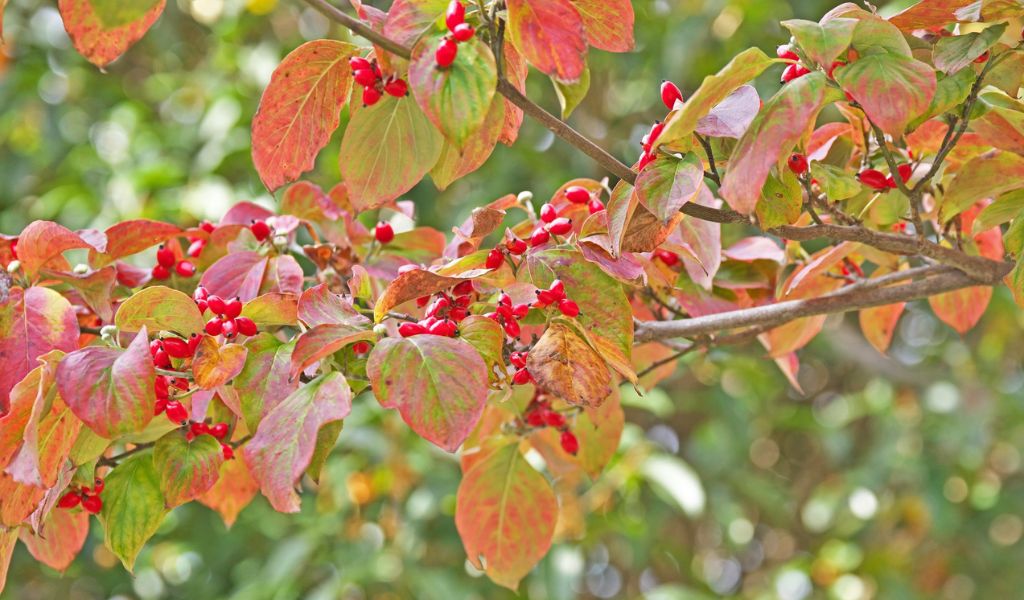
As the name suggests, the flowering dogwood has eye-catching flowers. These flowers have four large, petal-like bracts that can be white, pink, or even slightly red, depending on the variety. The actual flowers are small and surrounded by these showy bracts.
After the flowers, flowering dogwoods produce berry-like fruit that starts green and gradually turns red as it ripens. They are a valuable food source for birds and other wildlife.
Kousa Dogwood (Cornus Kousa)
Kousa dogwood, or Cornus kousa, is another fascinating and attractive dogwood tree species. It’s native to Eastern Asia (Japan, Korea, China, Taiwan) and is well-regarded for its unique features.
The leaves of the Kousa dogwood are simple and opposite, much like other dogwood species. They are typically elliptical or lance-shaped, with pointed tips and smooth edges.
During the growing season, the leaves are dark green and provide an elegant backdrop to the tree’s flowers. Then, in the autumn, the leaves turn beautiful shades of red, pink, and purple, providing a stunning display of fall color.
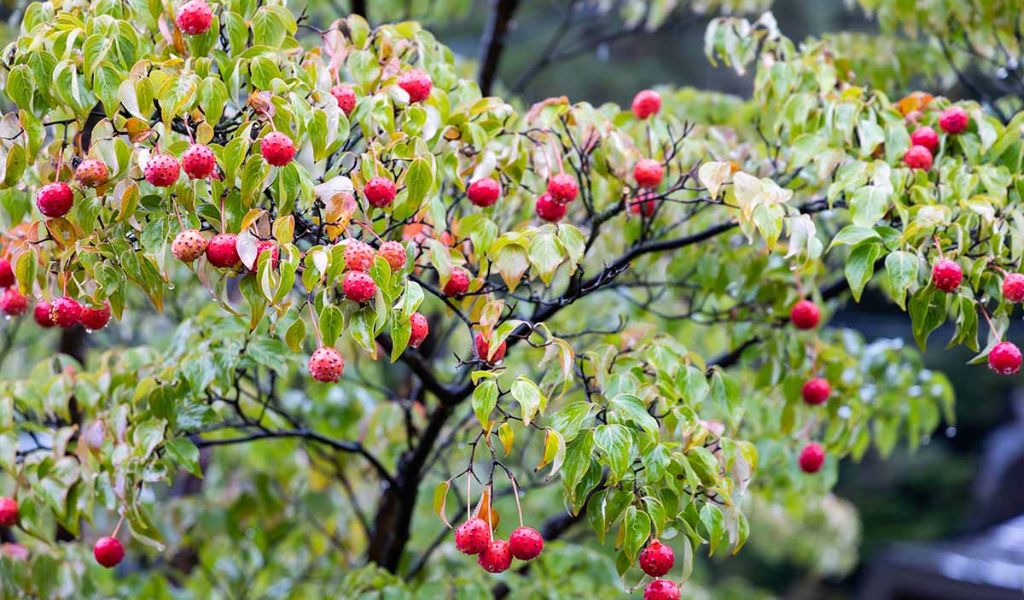
Kousa dogwood produces unique star-shaped flowers that appear after the leaves fully develop. These flowers are typically creamy white and have four pointed bracts that resemble stars. Meanwhile, the fruit of the Kousa dogwood is berry-like and has a unique appearance. It’s usually pink to red, looks like a raspberry, and is edible.
Gray Dogwood (Cornus Racemosa)
Gray dogwood, scientifically known as Cornus racemosa, is a native shrub that belongs to the dogwood family. While it’s not a tree in the traditional sense, it is a valuable and attractive woody plant.
This species typically grows to a height of 6 to 10 feet. It’s well-known for its spreading, thicket-forming growth habit. These features make it a valuable choice for wildlife habitat and erosion control.
Like other dogwood species, the leaves of gray dogwood are simple and opposite. They are typically elliptical or lance-shaped and have a pointed tip. The leaves are a medium green during the growing season.
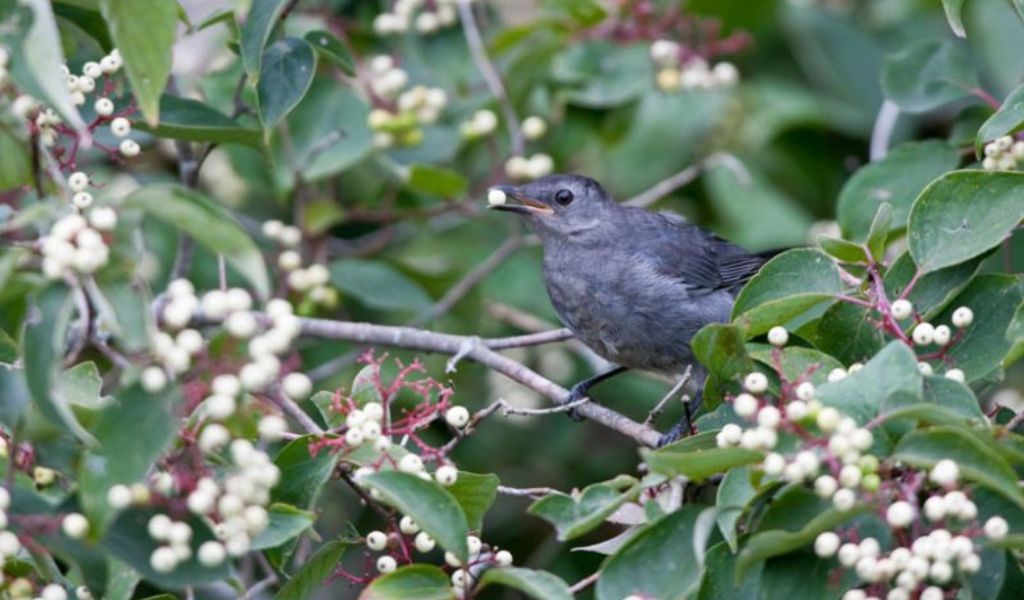
One of the unique features of gray dogwood is its grayish to brownish-gray stems, which give the shrub its name. The stems are often reddish at the tips, adding to the plant’s interest, especially in the winter when the leaves have fallen.
Red Twig Dogwood (Cornus Sericea)
Red twig dogwood, or Cornus sericea, has vibrant red branches that provide special winter interest. It typically grows to a height of 5 to 9 feet.
The most unique feature of this dogwood is its bright red or reddish-purple stems. These colorful branches provide a stunning visual element in the winter landscape, making it a popular choice for ornamental gardens.
The leaves of red twig dogwood are also simple, opposite, and typically oval to lance-shaped with smooth edges. They are medium green during the growing season, providing a nice contrast to the bright red branches.
In late spring, red twig dogwood grows small, creamy white flowers in clusters. While the individual flowers are not showy, the shrub makes up for it with its dense clusters of blossoms.
Rough Leaf Dogwood (Cornus Drummondii)
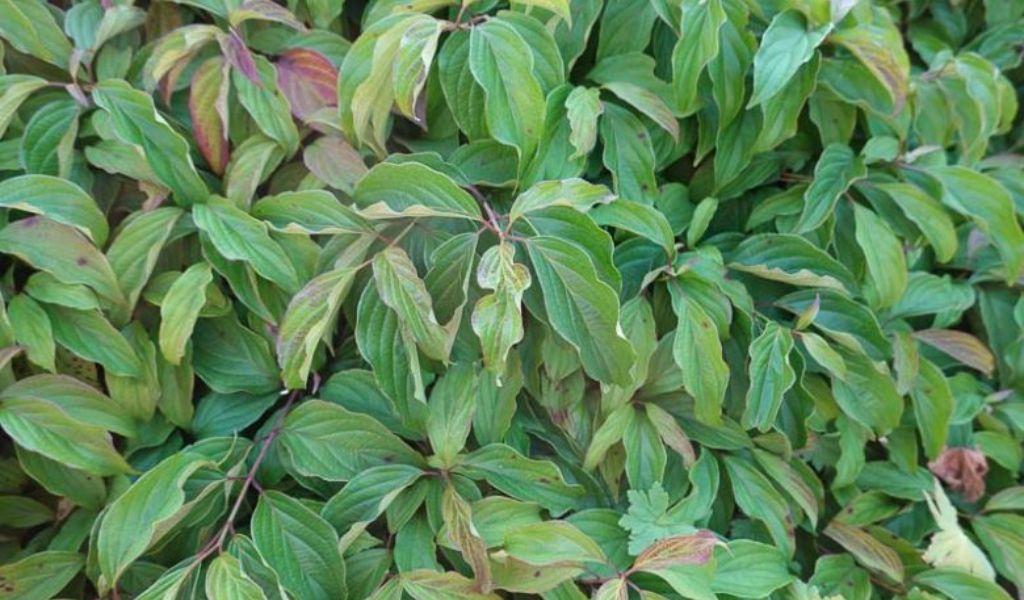
Rough-leaf dogwood is native to central and southern North America and is a common shrub or small tree in the wild. It grows up to 15 feet tall and has a rounded crown with spreading branches.
The oval leaves of rough-leaf dogwood are green in summer and turn yellow or red in fall. It has white flowers with no bracts that bloom in late spring or early summer. After the flowers, it has white drupes that ripen in late summer or early fall.
Stiff Dogwood (Cornus Foemina)
Stiff dogwood, or swamp dogwood, is a sizable shrub that can sometimes grow into a small tree. It is native to the East Central and southeastern regions of the United States. A distinctive feature of this species is its striking blue fruits.
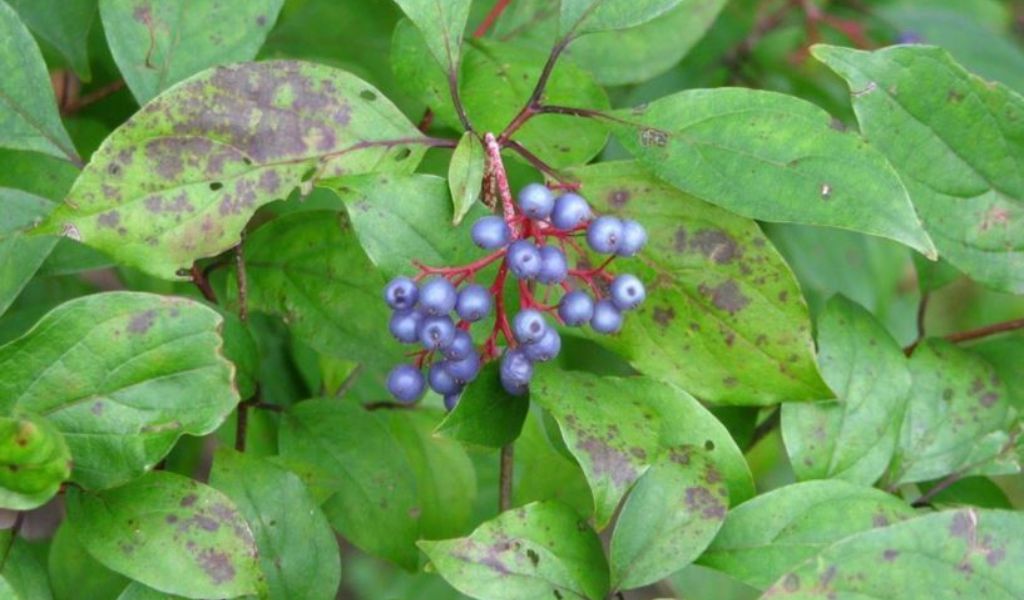
During the fall season, the leaves of the stiff dogwood turn a beautiful shade of burgundy red or purple, adding to its aesthetic appeal.
Among the leaves, there are small white flowers that appear in groups called cymes, although they have an unpleasant odor.
Stiff dogwood can reach 10 to 25 feet, depending on growing conditions. It is an excellent addition to landscapes, with its distinct blue fruits and striking fall coloration. It is well-suited for various growing zones and can handle a range of sun exposures.
Swedish Cornel (Cornus Suecica)
Swedish cornel is a subshrub known for its dark purple flowers and white bracts. It is a low-growing plant, typically reaching a height of 2 to 9 inches. This plant often grows in moist and boggy areas and thrives best in such conditions.
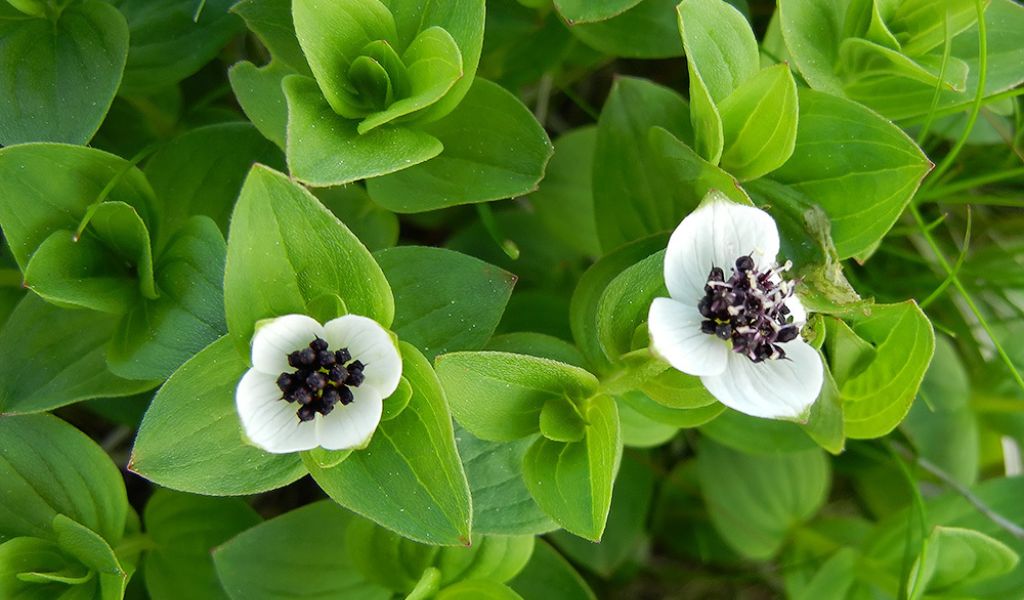
This species has oval leaves that are green in summer and turn yellow or red in fall. It has white flowers with large bracts that bloom in late spring or early summer. After flowers, it starts growing red drupes that ripen in late summer or early fall.
Additionally, it is essential to note that while these dogwood species are charming, they can be vulnerable to various bacterial and fungal issues and insect pests. Therefore, you should consider specific conditions when cultivating them.
Mountain Dogwood (Cornus Nuttallii)
Mountain dogwood is native to western North America, with its range extending from British Columbia down to California and across to Idaho, Oregon, and Washington. This species is a medium-sized deciduous tree known for its adaptability to shady environments and dry conditions. It is the western counterpart of the flowering dogwood but with unique features.
The Mountain dogwood tree has oval leaves that are green in summer and turn red or purple in fall. It has relatively large white flowers and offers vibrant fall foliage in shades of yellow, orange, or red. Its small fruits are bright orange or red.
Pagoda Dogwood (Cornus Alternifolia)
Pagoda dogwood, known as Cornus alternifolia, is famous for its unique foliage arrangement and architectural growth pattern. The common name “Pagoda Dogwood” is a helpful identifier for this plant, reflecting its unique tiered branching, resembling the layers of a pagoda.
This tree type stands out among dogwood species due to its alternate leaf arrangement on the stems. Unlike most dogwoods with leaves in opposite positions, this species has leaves that are staggered along the branches.
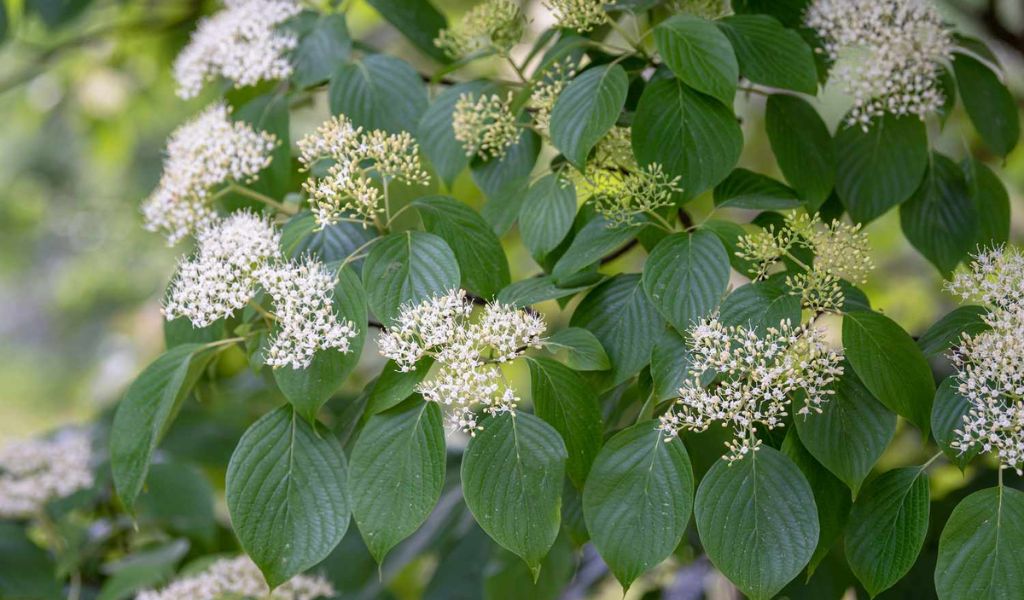
Pagoda Dogwood is native to Eastern North America and often grows in woodlands and shaded areas. It typically reaches heights of 15 to 25 feet, depending on growing conditions and pruning practices.
See more: What side of the tree does moss grow?
Dogwood Tree Diseases And Solutions
Dogwood trees, while hardy and adaptable, can sometimes fall prey to certain diseases. Recognizing the symptoms early and taking corrective measures is essential for the tree’s health. To assist you in taking care of the dogwood trees batter, we’ve compiled the common diseases, symptoms, causes, and solutions into the table below:
| Disease | Symptoms | Causes | Solutions |
| Severe Leaf Scorch | – Browning at leaf edges – Complete browning in severe cases – Possible leaf drop | – Extended dry periods – High temperatures – Wind exposure | – Increase watering frequency during drought – Apply organic mulch to retain soil moisture – Use shade cloth to protect young trees from intense sun – Ensure soil is well-aerated |
| Anthracnose Canker | – Dark, sunken lesions on leaves and bark – Premature leaf drop – Dead branches | – Fungus Discula destructiva – Cool, wet conditions in spring and fall | – Prune and destroy affected parts immediately – Apply recommended fungicides in early spring – Clear fallen leaves and debris to prevent spore spread – Improve air circulation through pruning |
| Crown Canker | – Sunken, darkened areas near tree base – Bark peeling and cracking – Exposed rotten core – Stunted growth or dieback | – Fungus Phytophthora cactorum – Constantly wet conditions around tree base | – Remove infected areas, applying wound paint if recommended – Improve soil drainage, avoiding overwatering – Apply mulch, ensuring it doesn’t touch the tree trunk – Use targeted fungicides after consulting a professional |
| Root Rot | – Yellowing and wilting leaves – Reduced growth and vigor – Soft, black roots (if inspected) | – Waterlogged soil – Fungi in the Phytophthora genus | – Ensure good drainage, especially at planting – Plant in raised beds or mounds if drainage is poor – Avoid planting in low-lying, water-prone areas – Apply fungicides as a preventive measure during wet seasons |
FAQs
What type of leaf does a dogwood tree have?
Dogwood trees typically have simple, ovate to elliptical leaves. The leaves commonly grow in an opposite pattern on the branches, meaning they grow in pairs, with one leaf opposite another along the stem.
The edges of the leaves are usually smooth, and the leaf shape may vary slightly among different species and varieties of dogwood trees. In the fall, these leaves often display vibrant colors, ranging from red to purple, contributing to the tree’s overall aesthetic appeal.
How can you tell a dogwood tree?
You can tell a dogwood tree by looking at its leaves, bark, fruits, and flowers:
- Dogwood tree leaves have a distinctive shape, color, texture, smell, and arrangement.
- Its bark is usually gray or brown and has a scaly or peeling texture.
- The fruits are usually drupes that are red or purple and have a round or oval shape.
- Dogwood tree flowers are usually white or pink and have four petals that form a cross shape.
What is the use of a dogwood leaf?
We can use a dogwood leaf for various purposes, such as:
- Medicinal: Some Native Americans brewed tea from the bark and leaves of dogwood trees to treat fever, pain, malaria, and other ailments. The leaves contain compounds that have anti-inflammatory, antipyretic, and antimalarial effects.
- Decorative: Dogwood leaves are attractive and colorful, especially in the fall when they turn yellow, orange, red, or purple. Many use them to decorate homes, gardens, or crafts.
- Ecological: The leaves provide food and shelter for various animals and insects. For example, some caterpillars feed on dogwood leaves and turn into butterflies. Also, some birds and mammals eat dogwood fruits and disperse the seeds.
Why are dogwood leaves turning brown and curling?
Dogwood leaves may turn brown and curl for several reasons, such as drought stress, sunburn, windburn, salt damage, herbicide injury, root damage, etc. If your dogwood tree has these leaf problems, it’s essential to find the specific cause and take proper action for recovery. Ask a local arborist or a plant expert for valuable insights and guidance for addressing the issues and ensuring the overall health of your tree.
Why do dogwood trees leave curl?
Dogwood tree leaves curl as a response to stress or injury. Curling allows the leaves to reduce their surface area and prevent further water loss or damage.
Some common causes of leaf curling are drought stress, sunburn, windburn, salt damage, herbicide injury, or root damage. To prevent leaf curling, it is vital to provide adequate water, shade, protection, and care for the dogwood trees.
The Bottom Line
Dogwood tree leaves are an essential part of these plants, as they reflect their beauty, diversity, and usefulness. By learning how to identify the leaves of dogwood trees, you can appreciate and care for these trees better.
No matter whether you are looking for a stunning flower, a delicious fruit, a soothing tea, or cozy firewood, dogwood trees can offer you something to enjoy. They are truly remarkable and versatile plants that enrich our lives.

